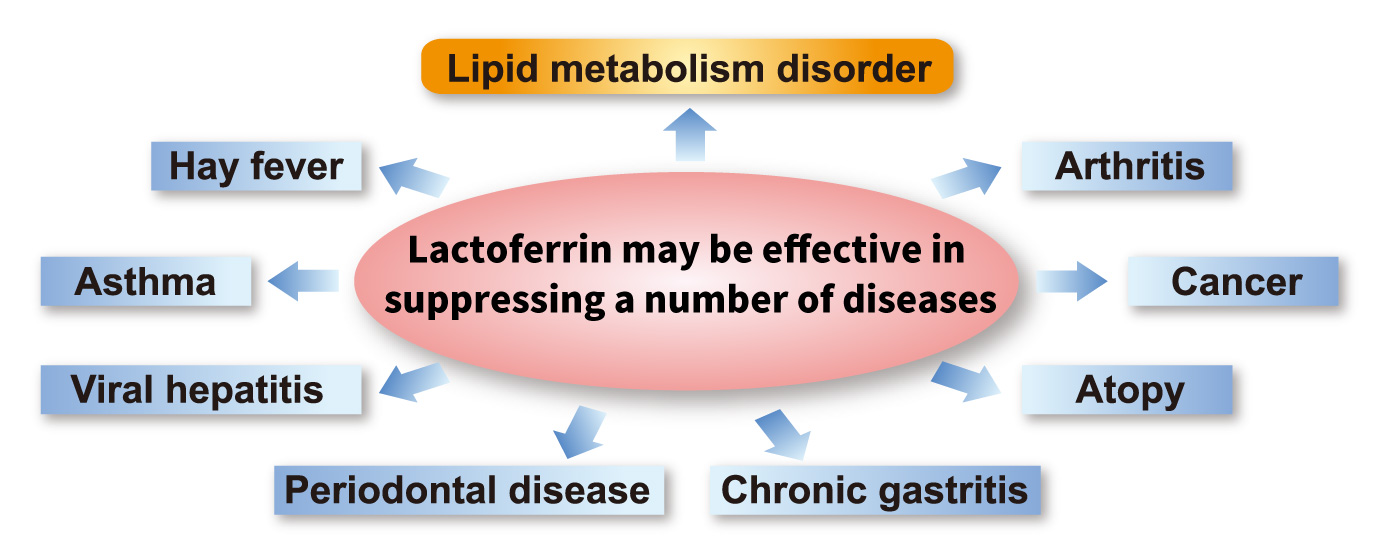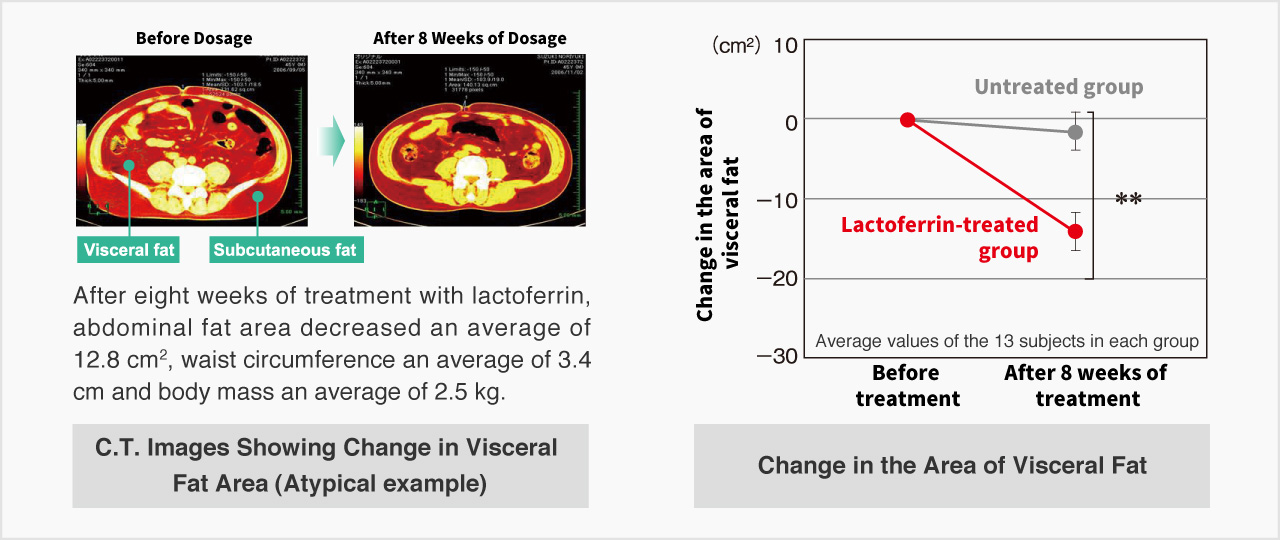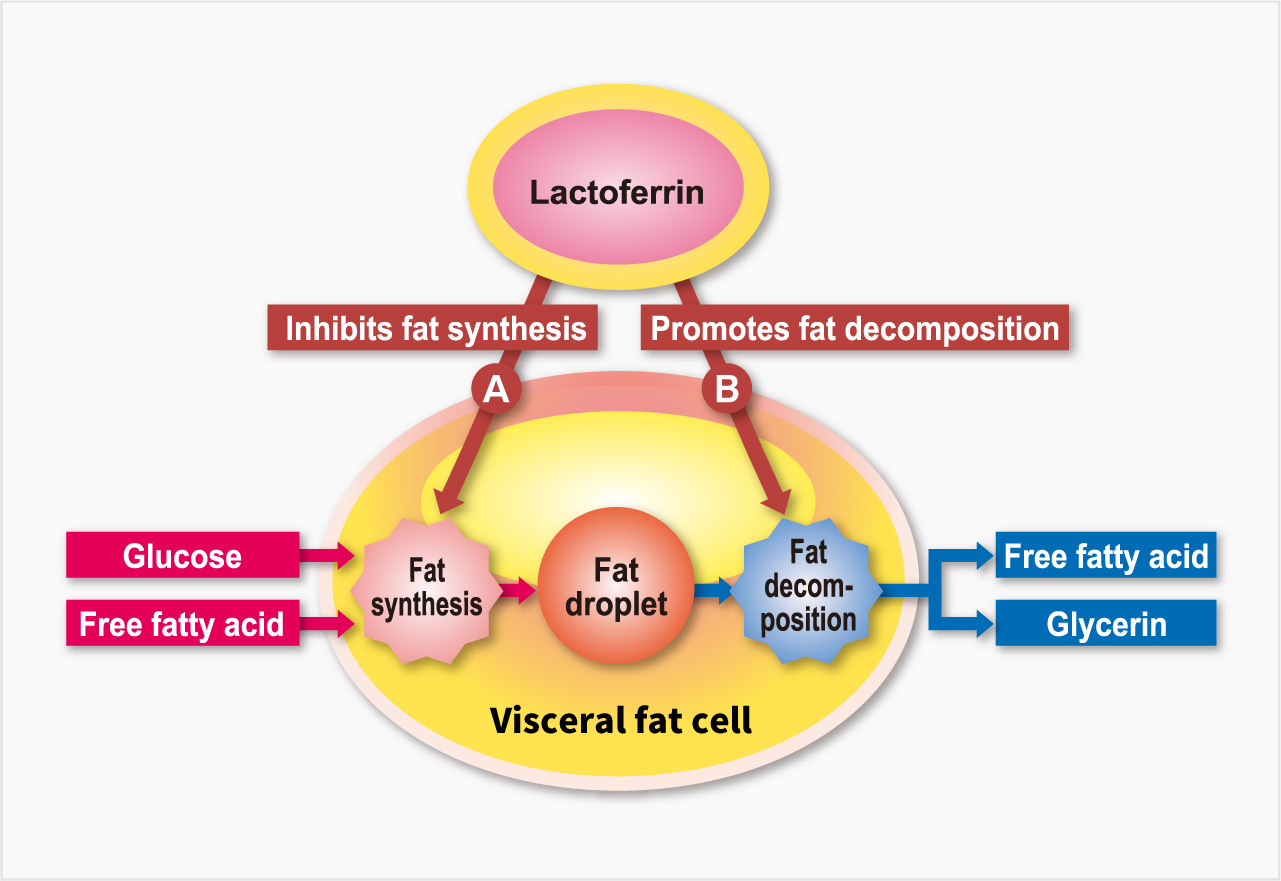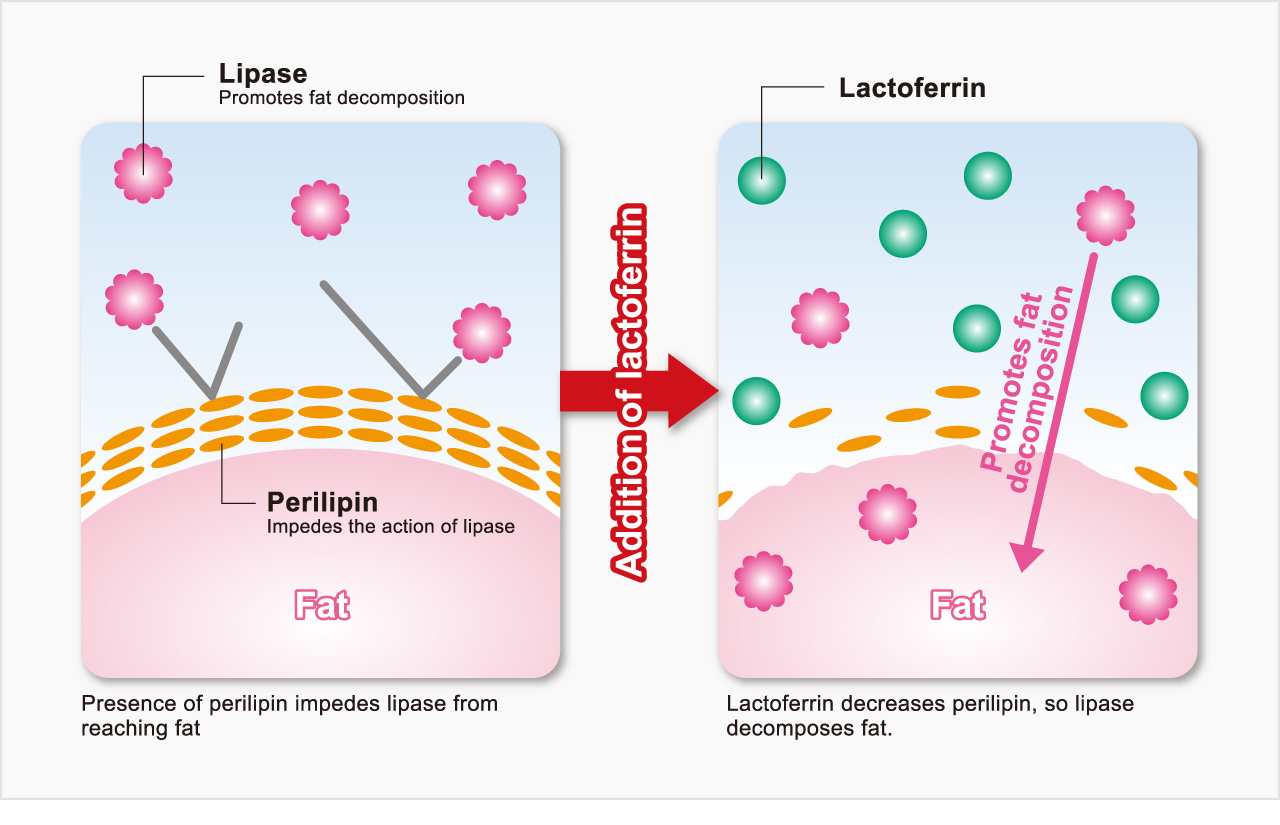Lactoferrin is a glycoprotein found mainly in the milk of mammals and has a molecular weight of 80,000 daltons. The lactoferrin content of human milk is 1–3 mg/ml, while the concentration in human colostrum is higher, at 5–7 mg/ml. Because lactoferrin molecules contain iron, they are pale pink; for this reason, lactoferrin is sometimes called “red protein.”
Lion began research into lactoferrin as a potential new ingredient for functional foods.

We administered enteric coated lactoferrin tablets to 30 adult men and women ages 30-62 with BMI1 of above 25 for two months. This group’s abdominal visceral fat area, as seen in a cross-sectional C.T. image, decreased an average of 12.8 cm2, with an average reduction in waist circumference of 3.4 cm and an average weight loss of 2.5 kg. This confirms that lactoferrin can help reduce visceral fat.
But how does lactoferrin reduce visceral fat?

Visceral fat is synthesized and broken down all the time. When excessive glucose and free fatty acids are present in the body, adipose cells use these substances to synthesize fat, which is stored in the form of fat droplets.
Conversely, when the body needs energy, these stored fats are broken down and converted into free fatty acids and glycerin to power the body.
The amount of visceral fat is determined by the balance of the fat synthesis rate and the fat decomposition rate. When synthesis outpaces decomposition, visceral fat increases; when decomposition exceeds synthesis, visceral fat decreases. We have identified two possible actions by which lactoferrin may reduce visceral fat: inhibiting the synthesis of fat (A) and promoting the decomposition of fat (B).

To study the effect of lactoferrin on fat synthesis (“A” in the diagram), we took samples of adipose cells and conducted a culture experiment. Normally, cultured adipose cells readily generate fat droplets when supplied with adequate nutrients; however when we added lactoferrin, almost no synthesis of fat droplets was observed. Using the latest genetic analyses (nutrigenomics1), we found that this result is due to lactoferrin’s ability to inhibit genes that promote the fat droplet synthesis reaction.
To study the effect of lactoferrin on fat decomposition (“B” in the diagram), we conducted an experiment in which we added lactoferrin to adipose cells that had large stores of fat. We found that the amount of glycerin (generated when fat is broken down) emitted from the cells increased, indicating that lactoferrin promotes the decomposition of fat. We then conducted further research into the mechanism behind this effect and discovered that lactoferrin acts in two ways to promote fat decomposition―it increases the concentration of cAMP, a substance that is important to fat decomposition, and decreases perilipin,2 which covers fat droplets to impede decomposition.

Back to Science Journal Menu